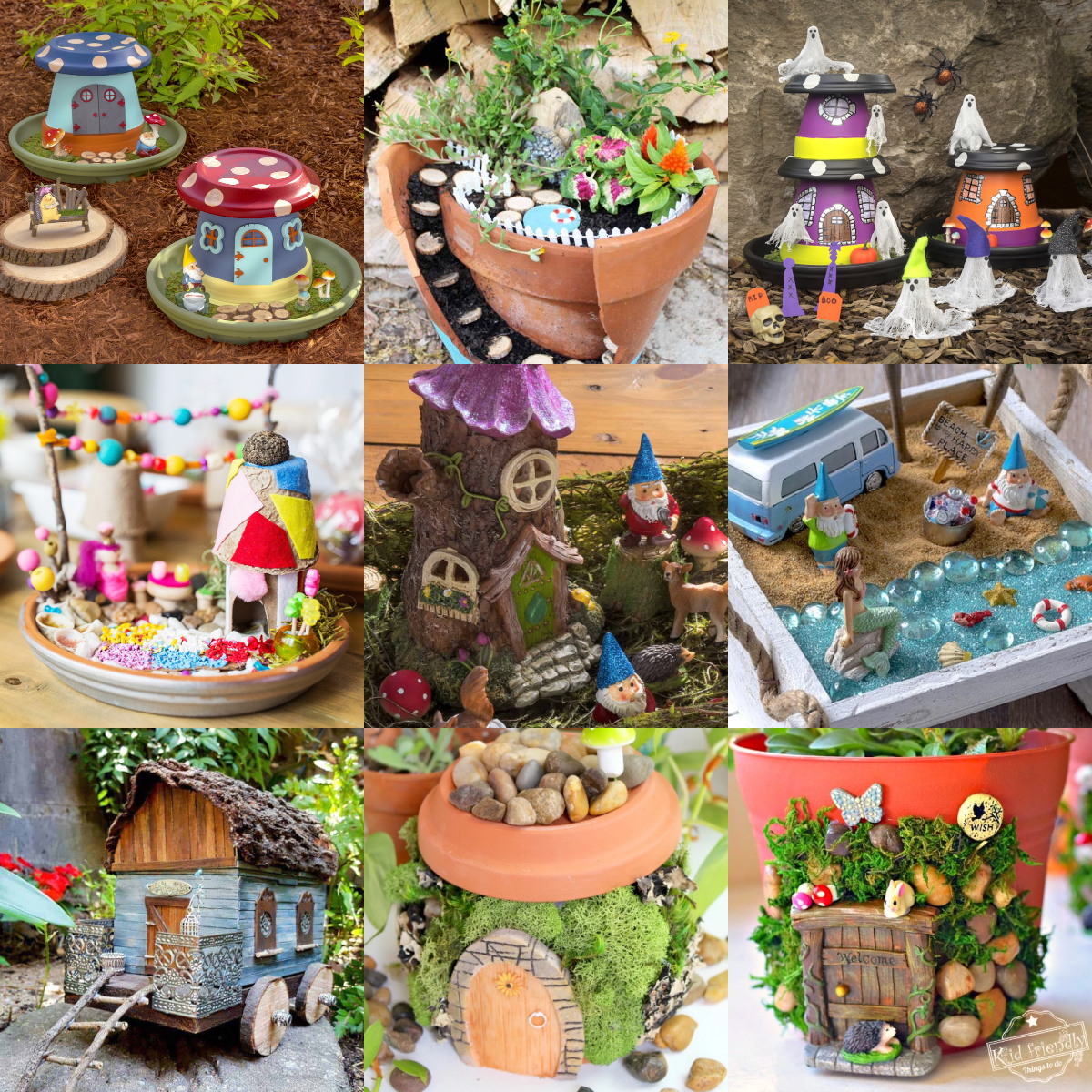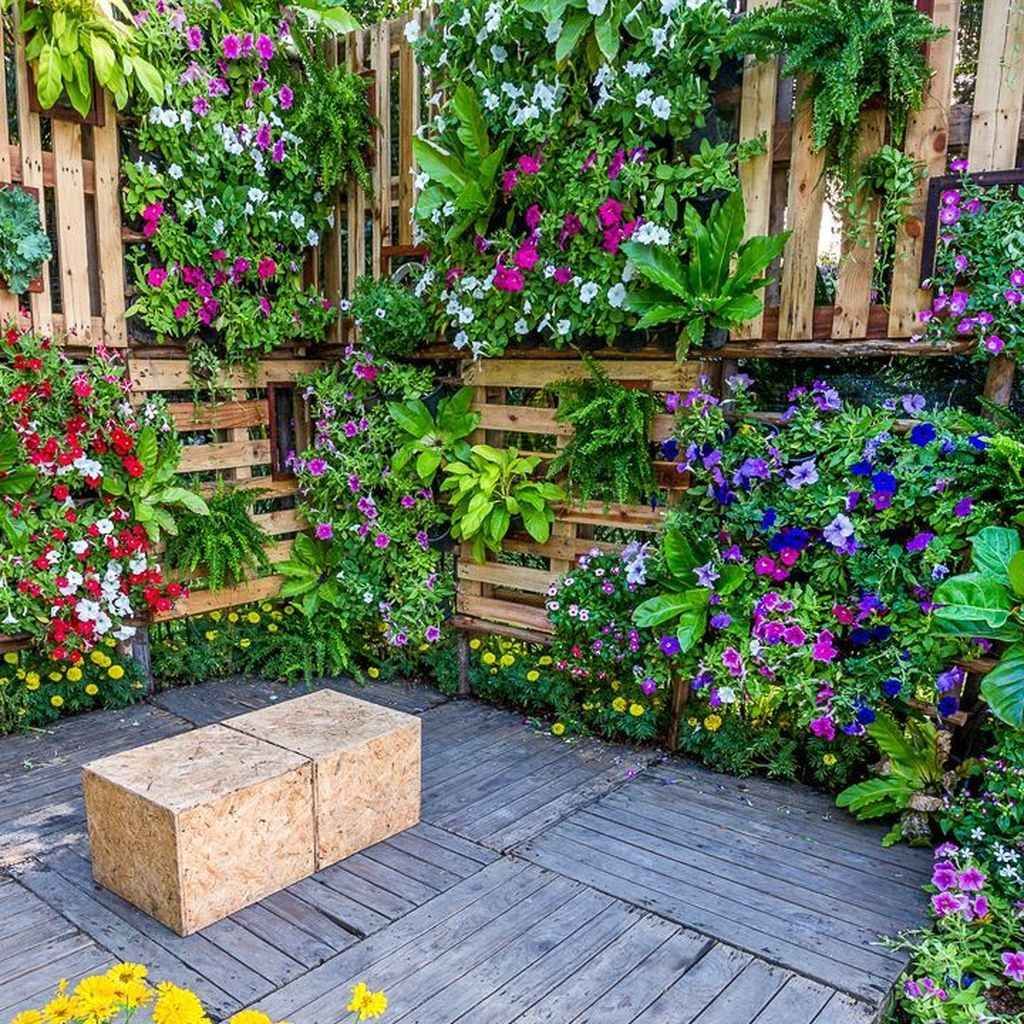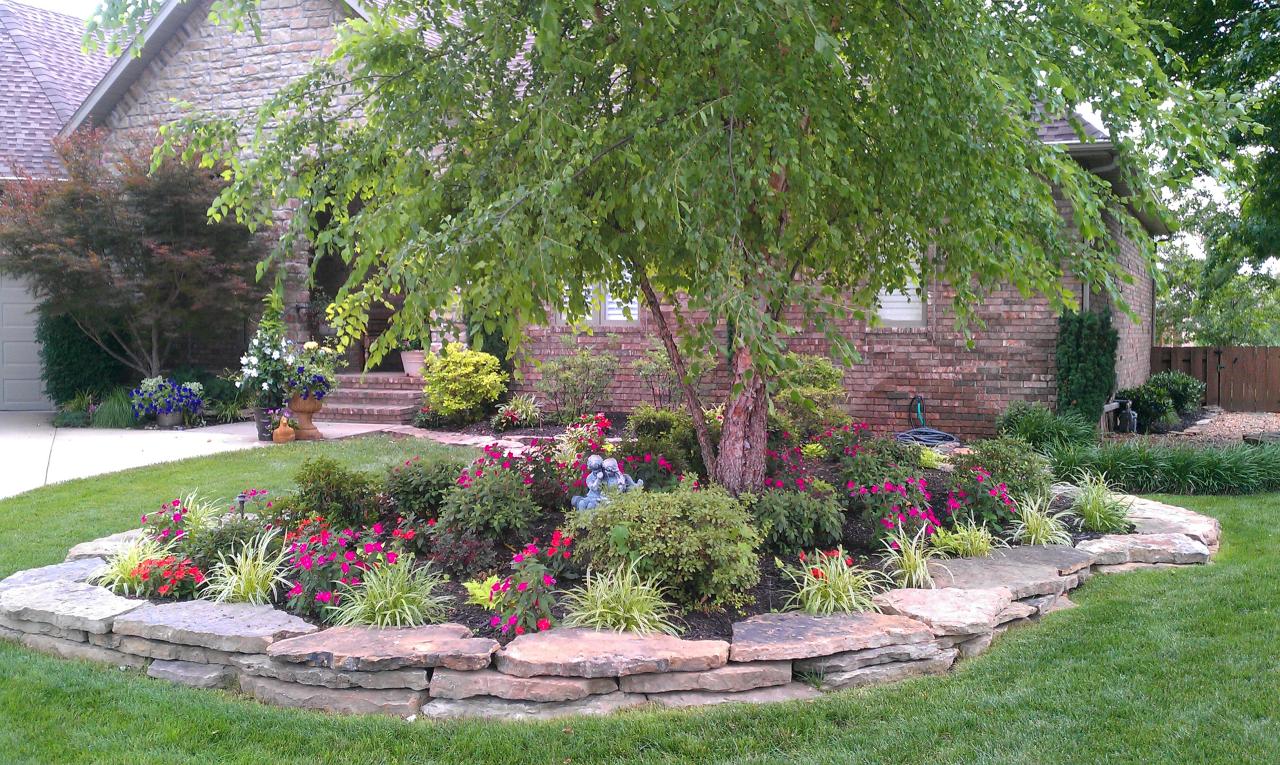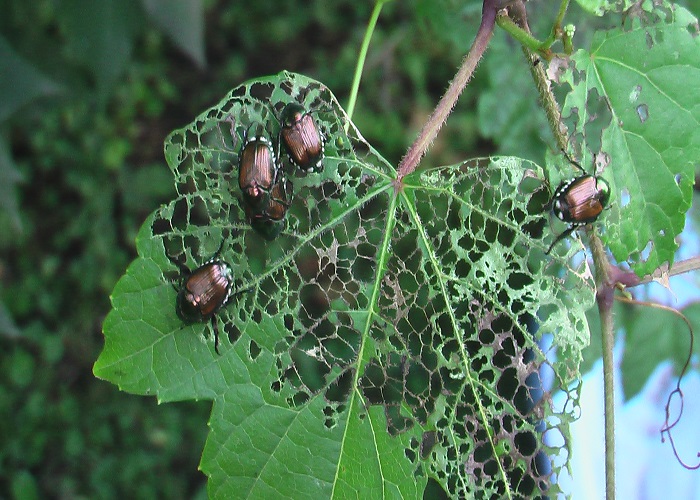DIY garden sets the stage for this enthralling narrative, offering readers a glimpse into a story that is rich in detail and brimming with originality from the outset.
The allure of DIY gardening lies in its ability to connect us with nature, providing fresh, healthy produce, and a sense of accomplishment. Whether you have a small balcony or a sprawling backyard, creating your own garden is a rewarding experience that offers numerous benefits. From planning and planting to nurturing and harvesting, each step of the journey is filled with learning, discovery, and a deep appreciation for the natural world.
The Allure of DIY Gardening
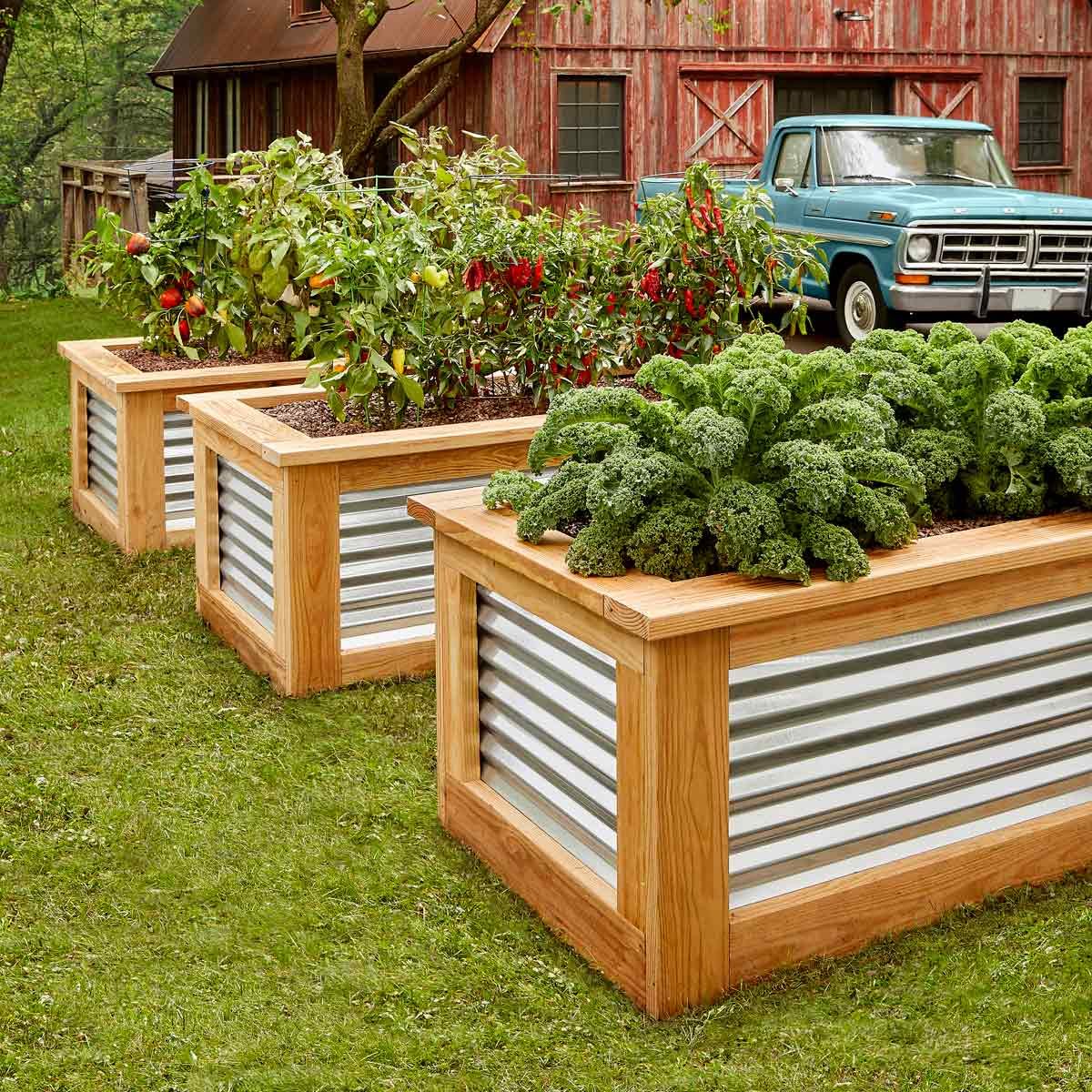
The appeal of DIY gardening has blossomed in recent years, with more people seeking the satisfaction of growing their own food and connecting with nature. This growing trend reflects a desire for healthier lifestyles, greater self-sufficiency, and a deeper appreciation for the natural world.
Benefits of DIY Gardening
Creating your own garden offers a wealth of benefits, extending beyond simply growing fresh produce.
- Fresh, Nutritious Food: Homegrown fruits and vegetables are packed with nutrients and flavor, often surpassing the quality of store-bought produce.
- Environmental Benefits: Gardening promotes sustainable practices, reducing reliance on commercial agriculture and its associated environmental impacts. By using compost, rainwater harvesting, and natural pest control methods, gardeners can minimize their carbon footprint and contribute to a healthier planet.
- Mental Well-being: Gardening has been shown to reduce stress, improve mood, and boost overall well-being. The act of tending to plants and witnessing their growth can be deeply therapeutic and provide a sense of accomplishment.
Personal Anecdotes and Stories
The joy of gardening is often expressed through personal experiences. Witnessing the transformation of a tiny seed into a flourishing plant, harvesting the fruits of your labor, and sharing the bounty with loved ones are just some of the rewarding aspects of this pastime.
“There’s a certain magic in watching a tiny seed sprout and grow into something beautiful and delicious. It’s a reminder that even the smallest things can have a profound impact.” – Anonymous
Getting Started
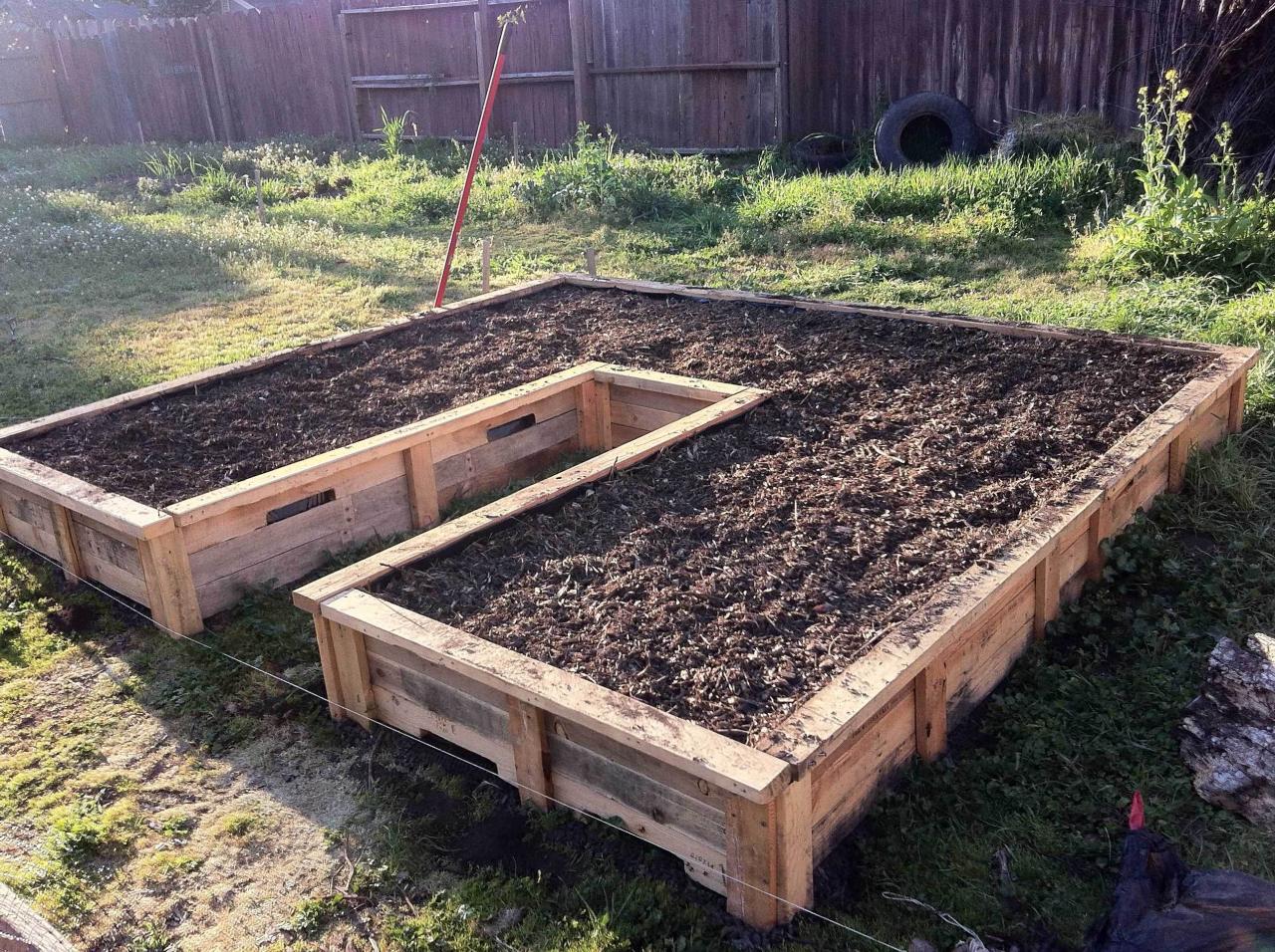
Embarking on your DIY gardening journey is exciting, but it’s crucial to start with a solid plan. This section will guide you through the initial steps of designing your garden, equipping yourself with essential tools, and creating a planting calendar.
Designing Your Garden Layout
Before you start digging, take some time to visualize your garden’s layout. Consider factors like space, sunlight, and soil type.
A simple layout for beginners might include a rectangular area divided into three sections:
- Sun-loving vegetables: Tomatoes, peppers, and cucumbers thrive in full sun, so place them in the area receiving the most direct sunlight.
- Partial shade vegetables: Lettuce, spinach, and kale can tolerate some shade, so they can be placed in a section receiving a mix of sun and shade.
- Herbs: Herbs like basil, rosemary, and thyme prefer well-drained soil and a sunny spot.
Remember, this is just a basic suggestion. Feel free to adjust the layout based on your preferences and available space.
Essential Tools and Equipment
Having the right tools makes gardening much easier and enjoyable. Here’s a list of essential tools for a DIY gardener:
- Hand trowel: Used for digging small holes and transplanting seedlings.
- Garden fork: Used for loosening soil and aerating compacted areas.
- Hand rake: Used for smoothing soil and removing debris.
- Gardening gloves: Protect your hands from dirt, thorns, and insects.
- Watering can: Essential for providing water to your plants.
- Measuring tape: Helps you plan your garden layout and measure plant spacing.
- Garden hose: For watering larger areas and reaching plants that are far from a watering can.
- Pruning shears: Used for trimming dead or overgrown branches.
- Wheelbarrow: Helpful for transporting soil, compost, and other materials.
Creating a Planting Calendar, Diy garden
A planting calendar helps you determine the best time to sow seeds and plant seedlings. Consider your local climate and the specific needs of each plant.
Here’s a sample planting calendar for a beginner’s garden:
| Month | Vegetables | Herbs |
|---|---|---|
| March | Lettuce, spinach, kale, carrots, peas | Parsley, cilantro, chives |
| April | Tomatoes, peppers, cucumbers, beans, squash | Basil, rosemary, thyme |
| May | Zucchini, eggplant, melons | Mint, oregano |
Remember, this is just a general guide. Always check the specific planting requirements for the plants you choose.
Choosing the Right Plants
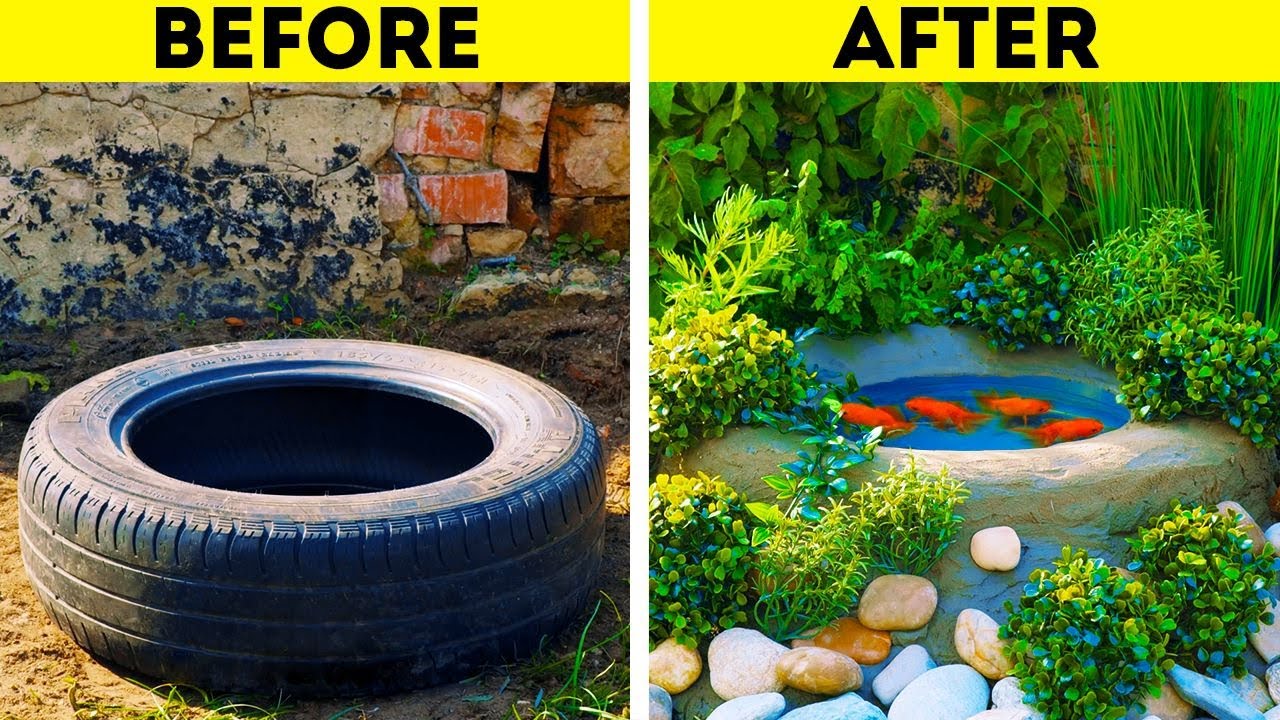
The heart of any DIY garden lies in selecting the right plants. It’s not just about aesthetics; it’s about choosing plants that thrive in your specific climate and garden space, aligning with your gardening goals.
Plant Selection for Various Climates and Garden Sizes
This table provides a glimpse into plant types suitable for different climates and garden sizes:
| Climate | Garden Size | Plant Types |
|---|---|---|
| Tropical | Small | Herbs (basil, cilantro, mint), leafy greens (lettuce, spinach), flowering plants (hibiscus, bougainvillea) |
| Tropical | Large | Fruit trees (mango, papaya, banana), flowering shrubs (jasmine, frangipani), vegetables (tomatoes, peppers, cucumbers) |
| Temperate | Small | Herbs (rosemary, thyme, oregano), vegetables (carrots, radishes, lettuce), flowering plants (pansies, petunias) |
| Temperate | Large | Fruit trees (apple, pear, plum), flowering shrubs (roses, hydrangeas), vegetables (beans, peas, squash) |
| Arid | Small | Succulents (aloe vera, cacti), herbs (sage, lavender), drought-tolerant flowers (zinnias, cosmos) |
| Arid | Large | Desert trees (mesquite, palo verde), drought-tolerant shrubs (oleander, rosemary), native grasses |
Comparing and Contrasting Plant Types
Understanding the pros and cons of different plant types can guide your choices:
Vegetables
- Pros: Provide fresh, nutritious food, can be grown in containers or raised beds, offer variety in size and growing time.
- Cons: Require regular watering and fertilization, susceptible to pests and diseases, can be labor-intensive.
Herbs
- Pros: Easy to grow, require minimal space, offer culinary and medicinal benefits, attract pollinators.
- Cons: Some herbs can be invasive, require specific soil conditions, may need to be harvested regularly.
Flowers
- Pros: Add beauty and color to the garden, attract pollinators, can be grown in various forms (annuals, perennials, bulbs).
- Cons: Some flowers require specific care and maintenance, may attract pests, some varieties can be short-lived.
Fruit Trees
- Pros: Offer a long-term investment, provide delicious fruits, add structure and shade to the garden.
- Cons: Require ample space, need regular pruning and fertilization, can be susceptible to pests and diseases.
Selecting Healthy and Robust Plant Varieties
When choosing plants, it’s essential to prioritize healthy and robust varieties:
- Inspect the plants carefully: Look for healthy foliage, strong stems, and a well-developed root system. Avoid plants with signs of disease, pests, or damage.
- Choose disease-resistant varieties: Research plant varieties known for their resilience to common diseases in your area. This can minimize the need for chemical treatments.
- Consider your climate: Select plants that thrive in your specific climate zone. This ensures they can adapt to the local conditions and grow successfully.
- Source plants from reputable nurseries: Choose nurseries known for their quality and expertise. They can provide guidance on plant selection and care.
Soil Preparation and Care
Healthy soil is the foundation of a thriving garden. It provides essential nutrients, water, and support for your plants to grow strong and flourish. Understanding how to prepare and care for your soil is crucial for success in DIY gardening.
Testing Soil pH
Soil pH measures its acidity or alkalinity, impacting nutrient availability for plants. Most plants thrive in slightly acidic to neutral soil (pH 6.0 to 7.0).
- You can purchase a soil pH testing kit from a garden center or online.
- Follow the kit’s instructions carefully for accurate results.
- Collect soil samples from different areas of your garden to get a representative reading.
Amending Soil with Compost
Compost is a natural, nutrient-rich amendment that improves soil structure, drainage, and water retention. It adds essential organic matter, enhancing soil fertility and promoting healthy microbial activity.
- Apply compost to your garden beds before planting or as a top dressing throughout the growing season.
- For best results, incorporate compost into the top 6-8 inches of soil.
- Compost can be purchased or made at home from kitchen scraps and yard waste.
Managing Soil Moisture
Maintaining adequate soil moisture is crucial for plant growth. Overwatering can lead to root rot, while underwatering can stunt growth.
- Water deeply and infrequently, allowing the top inch of soil to dry out between waterings.
- Use a moisture meter to gauge soil moisture levels.
- Mulching helps conserve soil moisture by reducing evaporation.
Preventing Soil Compaction
Compacted soil restricts root growth, limiting water and nutrient uptake.
- Avoid walking on garden beds, especially when the soil is wet.
- Use raised beds or container gardening to minimize compaction.
- Regularly aerate the soil with a garden fork or aerator tool.
Planting and Propagation Techniques
Planting and propagation are essential aspects of gardening that allow you to create new plants and expand your garden. These techniques are not only practical but also rewarding, giving you a sense of accomplishment and connection to nature.
Planting Seeds
Planting seeds is a fundamental gardening technique that involves introducing seeds into the soil to germinate and grow into new plants. This method is cost-effective and allows you to experiment with a wide variety of plant varieties.
Before planting seeds, it is crucial to select the right time and location. Most seeds require warm temperatures and adequate sunlight to germinate. The soil should be loose and well-drained, allowing for proper root development.
- Seed Depth: Planting seeds too deep can hinder germination, while planting them too shallow can expose them to drying conditions. The general rule of thumb is to plant seeds at a depth equal to two to three times their diameter.
- Spacing: Ensure sufficient space between seeds to allow for proper growth and development. Refer to seed packets for recommended spacing guidelines.
- Watering: Water seeds regularly, maintaining consistent moisture levels. Avoid overwatering, as this can lead to root rot.
Planting Seedlings
Seedlings are young plants that have been started indoors or in a nursery. They are typically more robust than seeds and offer a higher success rate for planting.
- Hardening Off: Before transplanting seedlings outdoors, it is crucial to harden them off. This process gradually acclimates them to outdoor conditions by exposing them to increasing amounts of sunlight and wind over a period of several days.
- Planting Depth: Plant seedlings at the same depth they were growing in their containers. Ensure that the root ball is fully covered with soil.
- Watering: Water seedlings thoroughly after planting to settle the soil around the roots. Continue to water regularly, especially during dry periods.
Planting Cuttings
Cuttings are pieces of plant material that are taken from a parent plant and rooted to produce new plants. This technique is a quick and efficient way to propagate many types of plants.
- Types of Cuttings: There are different types of cuttings, including stem cuttings, leaf cuttings, and root cuttings. The type of cutting used depends on the plant species.
- Rooting Medium: Cuttings are typically rooted in a well-draining medium, such as a mixture of perlite and vermiculite, or a specialized rooting hormone.
- Environmental Conditions: Maintain consistent moisture levels and provide a warm, humid environment for cuttings to root successfully.
Transplanting Established Plants
Transplanting established plants involves moving them from one location to another. This can be necessary for various reasons, such as relocating plants to a more suitable location or dividing overcrowded plants.
- Timing: The best time to transplant plants is in the early morning or late evening when temperatures are cooler. Avoid transplanting during hot or windy conditions.
- Preparation: Before transplanting, prepare the new planting site by amending the soil with compost or other organic matter.
- Digging and Planting: Dig a hole that is twice the width and depth of the plant’s root ball. Gently remove the plant from its original location, ensuring that the root ball remains intact. Place the plant in the new hole and backfill with soil, tamping it down gently to eliminate air pockets.
- Watering: Water the newly transplanted plant thoroughly to settle the soil and encourage root establishment.
Plant Propagation
Plant propagation refers to the process of creating new plants from existing ones. This technique allows you to multiply your favorite plants and share them with others.
Division
Division is a simple propagation method that involves separating a plant into smaller divisions, each with its own root system. This technique is suitable for plants that form clumps or grow in clusters.
- Timing: The best time to divide plants is in the spring or fall when they are actively growing.
- Process: Gently dig up the plant and use a sharp knife or shovel to separate the divisions. Ensure that each division has healthy roots and shoots.
- Replanting: Plant the divisions in their new locations, ensuring that they are spaced appropriately.
Layering
Layering is a propagation technique that involves encouraging roots to develop on a stem while it is still attached to the parent plant. This method is effective for plants that have stems that grow close to the ground.
- Types of Layering: There are different types of layering, including simple layering, tip layering, and air layering.
- Process: Select a healthy stem and bend it to the ground. Make a small cut in the stem and bury it in the soil. Keep the stem moist and wait for roots to develop. Once roots have formed, the stem can be severed from the parent plant.
Air Layering
Air layering is a propagation technique that involves encouraging roots to develop on a stem without burying it in the soil. This method is suitable for plants that have thick stems and are difficult to propagate by other methods.
- Process: Make a small cut in the stem and wrap it with moist sphagnum moss. Cover the moss with plastic wrap and secure it with tape. Once roots have developed, the stem can be severed from the parent plant and planted in a pot.
Watering and Fertilizing
Watering and fertilizing are two essential aspects of successful gardening. Providing your plants with the right amount of water and nutrients is crucial for their growth and health. This section will delve into the nuances of these practices, equipping you with the knowledge to nurture your garden to its fullest potential.
Watering Techniques and Schedules
The frequency and amount of water your plants need depend on factors such as the type of plant, climate, soil type, and season.
- Deep Watering: Aim for deep watering, which encourages roots to grow deeper, making plants more resilient to drought. Water thoroughly until the soil is moist, but avoid overwatering, which can lead to root rot.
- Watering Frequency: Water more frequently during hot, dry periods and less often during cooler, wetter seasons. Observe the soil moisture level to determine the appropriate watering schedule.
- Morning Watering: It’s generally recommended to water in the morning, allowing plants to absorb water before the heat of the day.
- Mulching: Mulch helps retain soil moisture and suppress weeds, reducing the need for frequent watering.
Types of Fertilizers and Application Methods
Fertilizers provide essential nutrients to plants, promoting healthy growth and vibrant blooms. Different types of fertilizers are available, each with its own advantages and disadvantages.
- Organic Fertilizers: Derived from natural sources like compost, manure, and bone meal, organic fertilizers release nutrients gradually, improving soil structure and microbial activity.
- Synthetic Fertilizers: Made from chemically processed minerals, synthetic fertilizers provide quick-acting nutrients but can potentially harm soil health if used excessively.
- Liquid Fertilizers: Easy to apply and readily absorbed by plants, liquid fertilizers are suitable for various types of plants.
- Granular Fertilizers: Slow-release granular fertilizers provide a steady supply of nutrients over time.
Organic Gardening
Organic gardening practices focus on promoting soil health and biodiversity, using natural methods to control pests and diseases. Organic gardening emphasizes the use of compost, manure, and other organic materials to enhance soil fertility and provide a natural source of nutrients.
- Composting: Composting kitchen scraps, yard waste, and other organic materials creates a rich, nutrient-rich soil amendment.
- Natural Pest Control: Employing natural methods like beneficial insects, companion planting, and organic pesticides to manage pests.
- Soil Health: Organic gardening practices prioritize building healthy soil through the use of compost, cover crops, and other organic materials.
Harvesting and Preserving
The culmination of your gardening efforts is the moment you get to reap the fruits (or vegetables) of your labor. Knowing when to harvest and how to preserve your bounty will ensure you enjoy the freshest, most flavorful produce possible.
Signs of Ripeness
The signs of ripeness vary depending on the type of plant you are harvesting.
- Fruits: Look for vibrant colors, a change in texture (like softening or giving slightly to the touch), and a sweet aroma. For example, tomatoes will turn red, strawberries will become a deep crimson, and melons will have a sweet smell when ripe.
- Vegetables: Consider size, color, and texture. For example, zucchini should be firm and have a deep green color, while carrots should be firm and have a bright orange color.
- Herbs: Harvest herbs before they flower for the best flavor. Look for vibrant green leaves and a strong aroma. For example, basil leaves will have a rich, sweet aroma when ready for harvesting.
Harvesting Techniques
Harvesting at the right time is crucial for preserving the flavor and quality of your produce.
- Fruits: Pick fruits in the morning after the dew has dried, as this helps prevent bruising. Use sharp scissors or pruning shears to avoid damaging the plant.
- Vegetables: Harvest vegetables when they are young and tender for the best flavor. Use a sharp knife to cut vegetables at the base of the plant. For leafy greens, cut the leaves at the base of the plant, leaving the roots intact.
- Herbs: Harvest herbs in the morning, before the sun gets too hot. Use sharp scissors or pruning shears to cut the stems just above a set of leaves. This encourages new growth.
Storing Produce for Freshness
Proper storage can extend the shelf life of your harvest and preserve its freshness.
- Refrigeration: Most fruits and vegetables should be stored in the refrigerator. Keep them in a crisper drawer to maintain optimal humidity.
- Cool, Dark Place: Some vegetables, like potatoes and onions, should be stored in a cool, dark place. Avoid storing them in the refrigerator, as this can cause them to sprout.
- Proper Packaging: Store produce in breathable containers or bags to allow for air circulation. Avoid over-packing, as this can lead to spoilage.
Preserving Techniques
Preserving your harvest allows you to enjoy the fruits of your labor year-round.
Canning
Canning is a method of preserving food by sealing it in airtight jars and processing it in a boiling water bath or pressure cooker.
- Water Bath Canning: This method is suitable for high-acid foods, such as fruits, tomatoes, and pickles. The jars are submerged in boiling water for a specific amount of time, which creates a vacuum seal and kills bacteria.
- Pressure Canning: This method is used for low-acid foods, such as vegetables, meats, and fish. The jars are placed in a pressure cooker, which heats the contents to a higher temperature and pressure, killing bacteria.
Freezing
Freezing is a simple and effective method of preserving fruits, vegetables, and herbs.
- Blanching: Blanching involves briefly immersing food in boiling water and then plunging it into ice water. This process helps to retain the color and texture of the food and reduces the risk of freezer burn.
- Freezing Techniques: Use freezer-safe containers or bags for freezing. Label and date the containers so you know when the food was frozen. Freeze food in single layers to prevent clumping.
Drying
Drying is a method of preserving food by removing moisture. This process can be done using a food dehydrator, an oven, or even the sun.
- Drying Methods: Slice fruits and vegetables thinly for faster drying. Spread the food in a single layer on drying trays. Dry food until it is leathery and brittle.
- Storage: Store dried food in airtight containers in a cool, dark place. Dried food can last for several months or even years.
DIY Garden Projects
DIY garden projects can be incredibly rewarding, allowing you to personalize your outdoor space and create a haven for yourself and your plants. These projects offer a great opportunity to get creative, utilize recycled materials, and enhance your gardening experience.
Designing a Small-Scale Vertical Garden Using Recycled Materials
Vertical gardens are an excellent way to maximize space, especially in smaller gardens or urban settings. They also add a unique visual element to any outdoor area. Using recycled materials for your vertical garden is a great way to be environmentally conscious and save money.
- Materials: Start by gathering recycled materials that can be used to create your vertical garden. Some common options include:
- Wooden pallets: These are readily available and can be easily repurposed into vertical garden structures.
- Plastic bottles: Cut the bottom off plastic bottles and use them as individual planters.
- Metal mesh: Metal mesh can be used to create a grid system for hanging plants.
- Old tires: Tires can be stacked and filled with soil to create a unique vertical garden feature.
- Design and Structure: Consider the size and shape of your vertical garden and the types of plants you want to grow. You can create a simple design using a single pallet or build a more elaborate structure with multiple tiers.
- Planting: Select plants that are suitable for vertical gardening, such as herbs, strawberries, or trailing vines. Ensure that the planting medium is appropriate for the plants you choose.
- Water and Drainage: Vertical gardens require proper drainage to prevent waterlogging. Use a material like landscape fabric to line your structure and create a drainage layer.
Building a Raised Garden Bed
Raised garden beds offer numerous benefits, including improved drainage, better soil control, and easier access for gardening.
- Materials: Common materials used for raised garden beds include:
- Wood: Cedar, redwood, or pressure-treated lumber are durable and long-lasting options.
- Stone: Natural stone or concrete blocks can create a more rustic or contemporary look.
- Metal: Metal panels or corrugated steel can provide a modern aesthetic.
- Planning and Dimensions: Consider the size and shape of your garden bed, the plants you want to grow, and the accessibility of the space.
- Construction: Once you have your materials, you can begin constructing your raised garden bed.
- Cut and assemble the sides: Cut your materials to the desired height and length, then join them to form the sides of the bed.
- Create a base: Build a base for your bed using wood, concrete blocks, or other materials.
- Add a drainage layer: Use landscape fabric or gravel to create a drainage layer at the bottom of the bed.
- Fill with soil: Fill the bed with high-quality soil that is appropriate for the plants you plan to grow.
- Planting: Once your bed is filled with soil, you can begin planting your chosen plants.
Repurposing Everyday Objects into Unique Garden Features
Upcycling everyday objects into garden features is a creative and sustainable way to add personality to your outdoor space.
- Old Tires: Tires can be used to create raised garden beds, planters, or even whimsical sculptures.
- Metal Buckets and Cans: Paint these containers with bright colors and use them to plant herbs, flowers, or small vegetables.
- Old Furniture: Repurpose old chairs, tables, or benches into unique planters or seating areas.
- Ceramic Pots and Dishes: Use broken or chipped ceramic pots and dishes to create mosaic-like garden features or planters.
- Wine Bottles: Cut the bottoms off wine bottles and use them as individual planters or create a decorative wall feature.
Resources and Inspiration
The journey of a DIY gardener is filled with learning, experimentation, and a constant pursuit of knowledge. Luckily, there are numerous resources available to support your gardening endeavors, from online communities to inspiring garden designs. This section will guide you to helpful websites, books, and online communities that can help you along your gardening journey.
Helpful Resources
Finding the right resources is crucial for a successful garden. Here are some websites, books, and online communities that can be invaluable:
- Websites:
- The Royal Horticultural Society (RHS): A comprehensive resource for all things gardening, offering advice on plant care, gardening techniques, and a wealth of information on different plant varieties.
- The National Gardening Association (NGA): A non-profit organization dedicated to promoting gardening, providing resources for gardeners of all levels, including educational materials, plant guides, and a community forum.
- Missouri Botanical Garden: A world-renowned botanical garden with an extensive website featuring information on plants, gardening techniques, and a wealth of educational resources.
- Gardeners’ World: A popular gardening magazine and website offering practical advice, plant guides, and inspiring garden designs.
- Books:
- “The Vegetable Gardener’s Bible” by Edward C. Smith: A comprehensive guide to vegetable gardening, covering everything from soil preparation to harvesting and preserving.
- “The Complete Guide to Container Gardening” by Barbara Pleasant: A practical guide to growing plants in containers, offering tips on selecting the right containers, choosing plants, and providing proper care.
- “The New Sunset Western Garden Book” by the Sunset Editorial Staff: A comprehensive guide to gardening in the western United States, featuring information on climate-specific plants, gardening techniques, and regional landscaping ideas.
- Online Communities:
- GardenWeb: A popular online forum where gardeners can connect, share tips, and ask questions.
- Reddit’s r/gardening: A subreddit dedicated to gardening, featuring discussions on a wide range of topics, from plant identification to troubleshooting gardening problems.
- Facebook Gardening Groups: Numerous Facebook groups dedicated to specific gardening interests, such as vegetable gardening, container gardening, or specific plant varieties, offering a platform for sharing knowledge and connecting with other gardeners.
Inspiring Garden Designs
Looking at inspiring garden designs can spark your creativity and provide ideas for your own space. Consider exploring these examples:
- Vertical Gardens: Space-saving solutions that utilize walls and fences for growing plants, creating a visually stunning and efficient use of space. Examples include living walls made from stacked planters or green walls constructed from modular panels.
- Raised Beds: Elevated planting areas offer better drainage, improved soil quality, and accessibility for gardening, particularly for individuals with mobility challenges. Examples include raised beds constructed from wood, stone, or recycled materials.
- Container Gardens: Versatile and adaptable, container gardens allow for growing a variety of plants in pots, tubs, or other containers, perfect for balconies, patios, or small spaces. Examples include hanging baskets, window boxes, and decorative pots.
- Xeriscaping: A water-wise approach to landscaping that emphasizes drought-tolerant plants and water-conserving techniques, ideal for arid climates. Examples include using native plants, rock gardens, and gravel pathways.
Share Your Gardening Experiences
The gardening community thrives on sharing knowledge and experiences. We encourage you to share your own gardening journey, tips, and challenges. By sharing your successes and failures, you can inspire others and learn from their experiences. Let’s create a vibrant community of DIY gardeners!
Conclusion
With a little planning, effort, and a touch of creativity, anyone can embark on their own DIY gardening adventure. From choosing the right plants to managing pests and diseases, this guide provides a comprehensive overview of everything you need to know to create a thriving garden that will bring you joy for years to come. So, get your hands dirty, embrace the process, and discover the magic of growing your own paradise.
A DIY garden can be a wonderful way to connect with nature and create a beautiful space for relaxation. You can even add a personal touch with handmade decorations, like bird feeders or wind chimes, using techniques found in homemade crafts websites.
These decorative touches not only add a unique charm to your garden but also encourage a sense of creativity and self-sufficiency.

